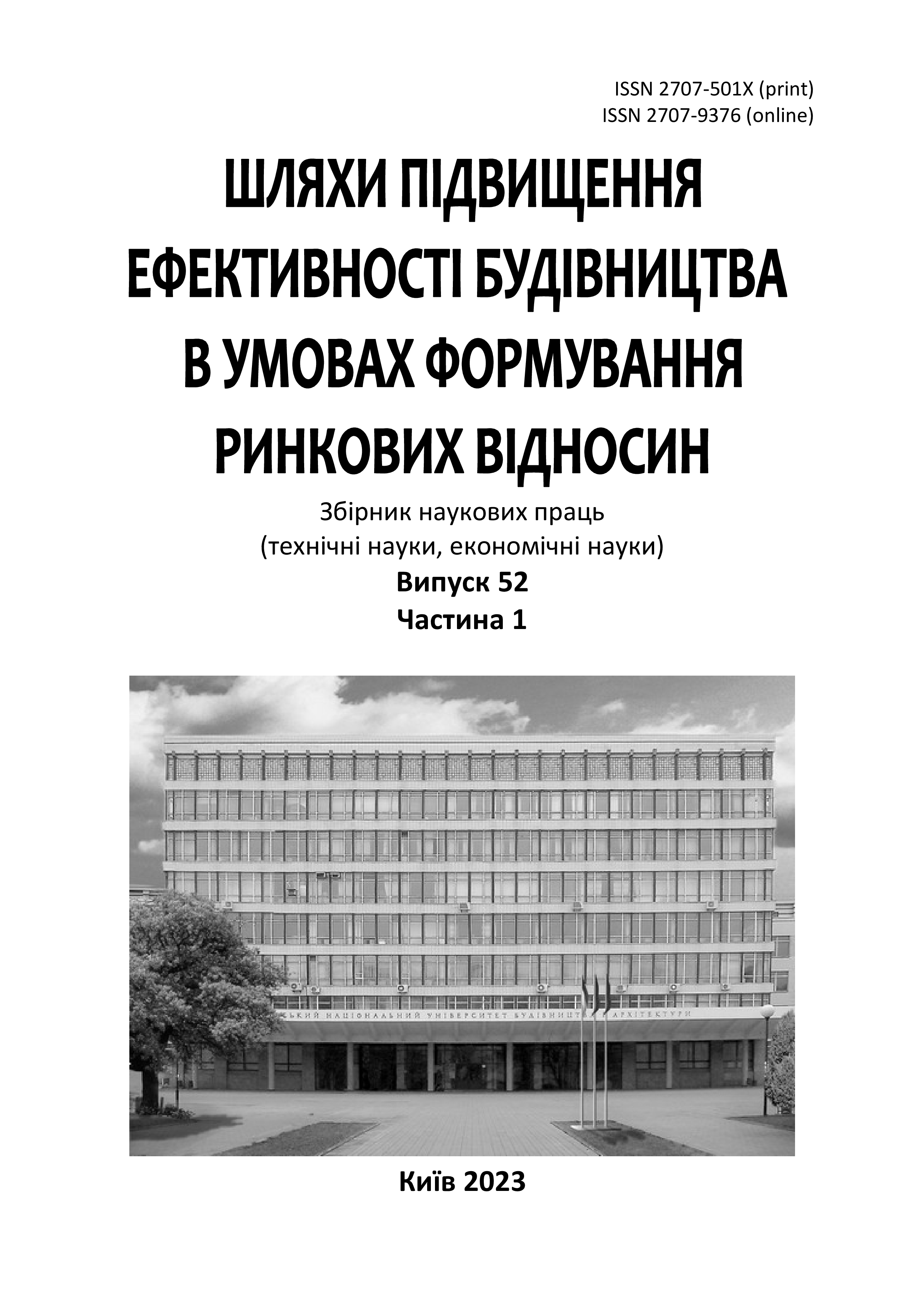Optimization of logistic processes to enhance productivity of a construction organization
DOI:
https://doi.org/10.32347/2707-501x.2023.52(1).34-40Keywords:
optimization, logistics processes, productivity, coordination, digital solutions, construction enterpriseAbstract
This article delves into the significance of logistics process optimization in the construction industry and its direct impact on productivity. Construction companies face unique challenges in managing the flow of materials, equipment, and personnel, making streamlined logistics crucial for efficient project delivery. By examining key strategies and approaches to logistics optimization, this article aims to provide insights into how construction companies can increase productivity and maximize project outcomes. The construction industry is a complex and dynamic sector that relies heavily on effective logistics processes to ensure the smooth flow of materials, equipment, and personnel. In an era where efficiency and productivity are key drivers of success, construction companies are increasingly focusing on optimizing their logistics operations. By streamlining and enhancing these processes, companies can significantly improve productivity, reduce costs, and ultimately deliver projects more efficiently. This article explores the importance of logistics optimization in construction and provides insights into key strategies for achieving enhanced productivity, because optimizing logistics processes in construction is instrumental in increasing productivity and achieving successful project outcomes. By focusing on effective planning, technology adoption, lean principles, collaboration, and modular construction, companies can streamline operations, reduce costs, and enhance resource utilization. The article emphasizes that logistics optimization is an ongoing journey that necessitates adaptability and awareness of industry trends. By prioritizing logistics optimization, construction firms can position themselves for success, deliver projects on time and within budget and ultimately gain a competitive advantage in the market.
References
Lundesjo G. Supply Chain Management and Logistics in Construction: Delivering Tomorrow’s Built Environment. KoganPage: London, UK, 2015. 288 р.
Сивак Р.Б. Управління ланцюгами створення цінності продукту: логістичний аспект: дис. … канд. екон. наук: 08.00.04. Тернопіль, 2008. 209 с.
Krainer J.A., Krainer C.W.M., Vidolin A.C., Hasse F.K., Romanel F.B., Romano C.A. Construction supply chain management: a scoping review. Ambiente Construído. 2021. Vol. 21, №. 4, p. 343-365. http://dx.doi.org/10.1590/s1678-86212021000400573
Le P.L., Jarroudi I., Dao T.-M., Chaabane A. Integrated construction supply chain: An optimal decision-making model with third-party logistics partnership. Construction Management and Economics. 2021, vol. 39(2), p. 133-155. DOI: 10.1080/01446193.2020.1831037
Арутюнян І.А. Управління формуванням логістичних систем функціонування будівельного виробництва: монографія. Запоріжжя: ЗДІА, 2011. 308 с.
Волков В.П., Пшінько О.М., Павлов І.Д., Арутюнян І.А. Управління логістичними системами: навч. посіб. Запоріжжя: Запорізький національний університет, 2012. 259 с.
Arbulu R.J., Ballard G. Lean Supply Systems in Construction. 2004. URL: https://www.researchgate.net/profile/Glenn-Ballard-2/publication/292225035_Lean_supply_systems_in_construction/links/56f00d5b08ae3c653436654a/Lean-supply-systems-in-construction.pdf
Тугай О.А., Лагутін Г.В., Поколенко В.О., Борисова Н.О. та ін. Сучасні моделі організації будівництва на засадах девелопменту. Містобудування та територіальне планування. 2010. Вип. 36. С. 453-457
Downloads
Published
How to Cite
Issue
Section
License

This work is licensed under a Creative Commons Attribution 4.0 International License.
Authors who publish with this journal agree to the following terms:
- Authors retain copyright and grant the journal right of first publication with the work simultaneously licensed under a Creative Commons Attribution License that allows others to share the work with an acknowledgement of the work's authorship and initial publication in this journal.
- Authors are able to enter into separate, additional contractual arrangements for the non-exclusive distribution of the journal's published version of the work (e.g., post it to an institutional repository or publish it in a book), with an acknowledgement of its initial publication in this journal.
- Authors are permitted and encouraged to post their work online (e.g., in institutional repositories or on their website) prior to and during the submission process, as it can lead to productive exchanges, as well as earlier and greater citation of published work (See The Effect of Open Access).

